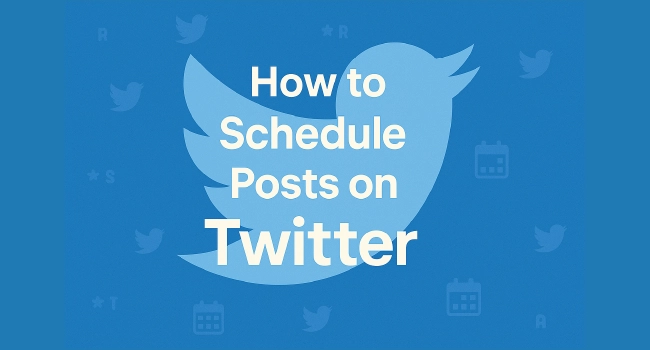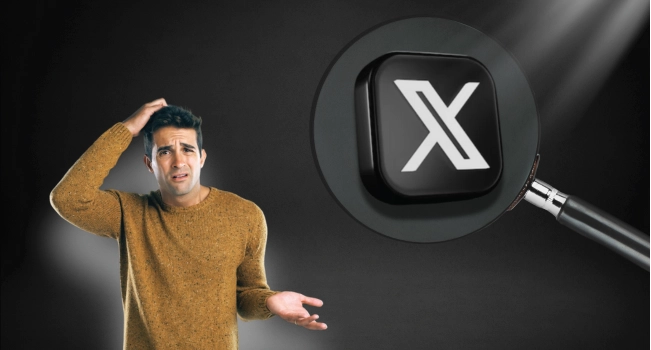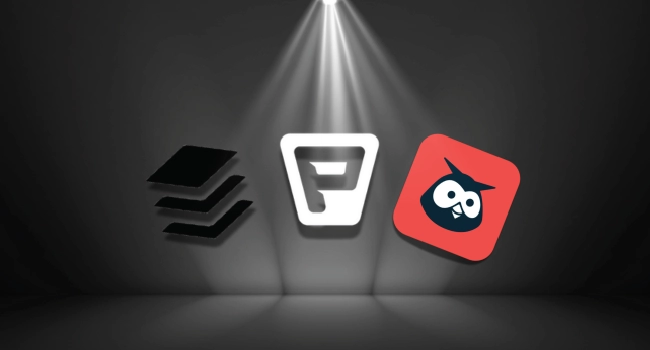Knowing how to schedule posts on Twitter is one of those skills that can save you a lot of time and keep your profile active even when you’re busy.
Think about those moments when you’re traveling, stuck in a meeting, or simply want to unplug for the weekend. Instead of rushing to post in real time, you can plan your updates ahead of time and let them roll out automatically.
In this guide, we’ll walk through the different ways you can schedule tweets, explain the benefits of using this feature, and share some smart tips to make sure your posts reach people at the right moment.

How Scheduling Posts Can Work for You
When you know how to schedule posts on Twitter, you gain more than just convenience. Scheduling lets you stay consistent without being glued to your phone all day. This matters because a regular posting rhythm helps you build trust and keep your audience engaged.
Here are a few big benefits you can expect:
Reach different time zones
Your audience might not all be online when you are. By learning how to schedule a tweet, you can plan posts to hit peak times anywhere in the world.
Plan campaigns with ease
Whether you're launching a product, promoting content, or setting up a contest, being able to schedule tweets makes it easier to coordinate everything.
Free up time for interaction
Instead of worrying about posting, you can focus on replying, joining conversations, and retweeting on Twitter.
Mix strategy with spontaneity
Scheduling handles your steady flow, while you can still drop in live updates for trending moments.
To get the most out of scheduling, treat it as part of your content plan. For example, you can draft a week’s worth of posts in advance, then focus on conversations and trending topics as they happen.
Scheduling keeps your profile active, but there’s one more thing that can make a big difference, and that’s engagement. When your post goes live, a few retweets in those first minutes can push it in front of more eyes.
Instead of waiting and hoping, you can give your posts that instant boost by choosing one of our top services and buy Twitter retweets. The service comes with instant delivery from real people. That early momentum helps the post spread faster, attracting even more interactions.
How to Schedule Posts on Twitter Using Native Tools

If you’re wondering how to schedule posts on Twitter, the platform itself gives you three built-in ways to do it: the desktop composer, X Pro (the advanced dashboard), and the Ads manager. These cover most needs, from quick one-off scheduling to long-term campaign planning.
Desktop Composer (Free)
This is the simplest method and works directly from Twitter on desktop. When you compose a new post, you'll see a small calendar icon at the bottom of the window.
Clicking it opens a menu where you can pick the exact date and time you want your post to go live. It's straightforward and doesn't require any upgrades or extra tools.
-
Open the composer on desktop
-
Click the calendar icon at the bottom
-
Choose the date and time you want
-
Confirm and save your post
-
To view or edit later, go to Unsent posts in the composer
X Pro (Formerly TweetDeck)
If you're more active or run multiple accounts, how to schedule tweets inside X Pro is a big upgrade.
You get a dashboard with multiple columns, so you can track mentions, feeds, and scheduled posts side by side.
There's even a dedicated Scheduled column where you can see everything lined up and adjust times on the fly. This tool is part of the premium subscription, so it's ideal for heavier users or teams.
X Ads (For Organic And Promoted Posts)
The Ads manager (ads.x.com) is usually thought of as an advertising tool, but it also lets you schedule regular posts. You'll find it under Creatives → Posts.
After writing your post, you can set the date and time just like with the composer. The main advantage here is flexibility, you can plan out content as far as 12 months in advance, which makes it a strong choice for campaigns tied to product launches, holidays, or big events.
Each of these options has its own strength: the composer is perfect for quick scheduling, X Pro is great for ongoing management, and Ads is best for long-term strategy.
| Method | Cost | Best For | Key Features | Limitations |
|---|---|---|---|---|
| Desktop Composer | Free | Individuals & light posting | Simple calendar picker, Unsent posts view | No threads or polls, desktop only |
| X Pro (TweetDeck) | Paid plan | Power users & account managers | Multi-column dashboard, Scheduled column | Subscription required |
| X Ads Dashboard | Free (with account) | Long-term campaigns & promotions | Schedule organic or promoted posts, up to 12 months | Interface less intuitive, ad-focused |
How to Schedule Tweets More Effectively

Now that you know the basics of how to schedule posts on Twitter, it’s important to understand what the built-in tools can’t do. While they work well for simple planning, you’ll quickly hit limits if you want more control.
Limitations of Native Scheduling
While the built-in options are handy, they're far from perfect. If you only post occasionally, you might not notice the drawbacks.
But once you start planning campaigns, threads, or polls, the cracks begin to show. These restrictions can hold back your strategy and make it harder to stay flexible. Here are the main limitations you'll run into:
-
No mobile scheduling: The Twitter mobile app still doesn't let you schedule directly. You need to use desktop or switch to a third-party app if you want that flexibility.
-
No threads or polls: If you've tried to line up a full thread or add a poll, you've noticed the option just isn't there. You'll need an external scheduler for those features.
-
Time horizon is capped: The Ads dashboard officially allows up to 12 months in advance. Some guides mention ~18 months with the desktop composer, but in practice you should plan for one year.
-
Limited visibility: You can see your scheduled posts in "Unsent posts" or a Scheduled column in X Pro, but there's no deeper analytics or "best time" suggestions built in.
Why These Gaps Matter
Let's say you've carefully planned a product launch thread with 10 connected tweets. Using the native composer, you'd have to post them manually one at a time, definitely not ideal.
Or imagine wanting to run a fun poll about what does rt mean on twitter during a campaign. You'd be stuck, because polls can't be scheduled natively.
The truth is, the native options are great for keeping a steady presence, but they don't cover advanced strategies.
If you want to hit peak times, manage campaigns, or experiment with different formats, you'll need a scheduler that goes further. In the next section, we'll look at the best third-party tools that fill these gaps.
Best Third-Party Tools for Scheduling on Twitter
If you want to go beyond the basics of how to schedule posts on Twitter, third-party tools give you the flexibility that the native options can’t.
They make it easy to handle threads, polls, and even suggest the best times to publish. You also get extra perks like analytics, team collaboration, and mobile scheduling, things that save you time and sharpen your strategy.
Why Use a Third-Party Scheduler?
Think about the gaps we just covered. You can't plan a full thread, you can't schedule a poll, and you're stuck at a 12-month horizon.
By switching to a third-party app, you can do all of that and more. For example, you could plan a campaign weeks ahead, include a poll, and still have room to adjust timing on the go.
Some even let you manage a private Twitter account private alongside public accounts, giving you one hub for all your planning.

Popular Options Worth Considering
Here's a closer look at the most useful scheduling tools available right now.
-
Buffer – Simple and reliable. Lets you schedule threads, manage multiple platforms, and view analytics to track results.
-
Hootsuite – Great for teams. Offers advanced workflows and strong reporting features.
-
Sprout Social – A premium choice with collaboration tools, mobile scheduling, and detailed analytics.
-
Planable – Known for its visual content calendar and easy collaboration.
-
Metricool – Supports thread scheduling and includes performance insights.
-
Publer – Covers threads, polls, and mobile scheduling. One of the few that checks all boxes.
-
Loomly – Stands out because it allows you to schedule polls directly, something most tools don't offer.
| Tool | Threads | Polls | Mobile Scheduling | Analytics & Insights | Notes |
|---|---|---|---|---|---|
| Buffer | Yes | No | Yes | Yes | Simple, beginner-friendly |
| Hootsuite | Yes | No | Yes | Yes | Best for teams & larger workflows |
| Sprout Social | Yes | No | Yes | Yes | Premium pricing but feature-rich |
| Planable | Yes | No | Yes | Limited | Visual planner, easy collaboration |
| Metricool | Yes | No | Yes | Yes | Strong thread support |
| Publer | Yes | Yes | Yes | Yes | Covers both threads and polls |
| Loomly | No | Yes | Yes | Yes | Rare option that supports polls |
Each of these tools fills the gaps left by native scheduling. If threads or polls are part of your strategy, Publer and Loomly are clear winners.
If you need collaboration and analytics, Hootsuite or Sprout Social might be better. And if you just want something simple and affordable, Buffer is often enough.
Conclusion
Mastering how to schedule posts on Twitter is one of the easiest ways to stay consistent, reach more people, and save valuable time.
With native tools for quick planning and third-party apps for advanced features, you have everything you need to keep your profile active around the clock.
Start by scheduling a few posts, track the results, and refine your timing. Over time, you'll build a steady rhythm that keeps your audience engaged and your presence strong without the stress of always being online.
FAQs | Frequently Asked Questions |
Can I schedule posts with images, videos, or GIFs?
Yes. The native composer and most scheduling tools support media uploads. Just keep in mind the same size and length restrictions apply as they would for a live post.
Is there a limit to how many tweets I can schedule?
Twitter doesn’t publish a strict cap for scheduled posts, but in practice you can schedule a large volume without issues. Third-party tools may have their own limits depending on your plan.
Do scheduled tweets post automatically if my device is offline?
Yes. Once you set them up, they’re handled by Twitter’s servers. Your device doesn’t need to be online for the post to go live.
Can I edit a tweet after I schedule it?
No, you can’t edit the text of a scheduled post. If you want to change it, you’ll need to delete the scheduled version and create a new one.
